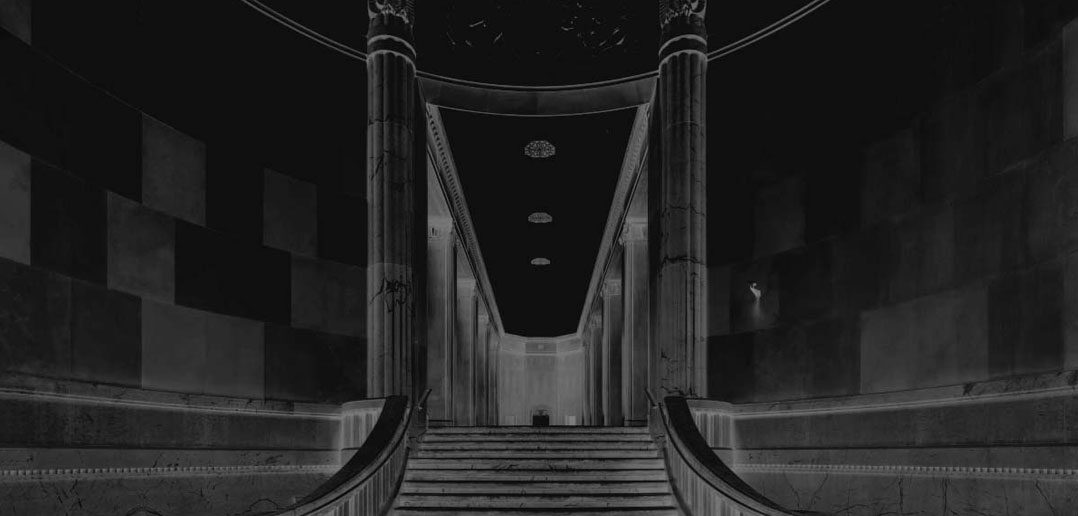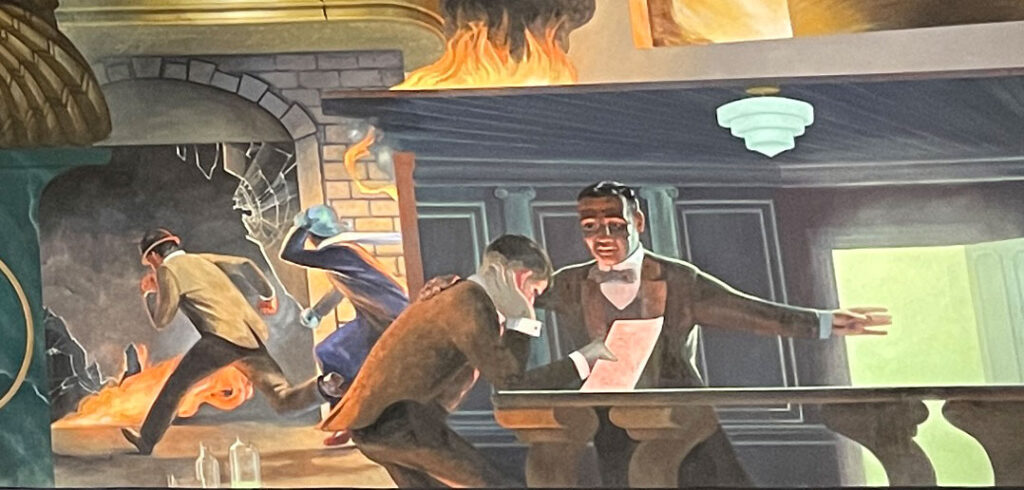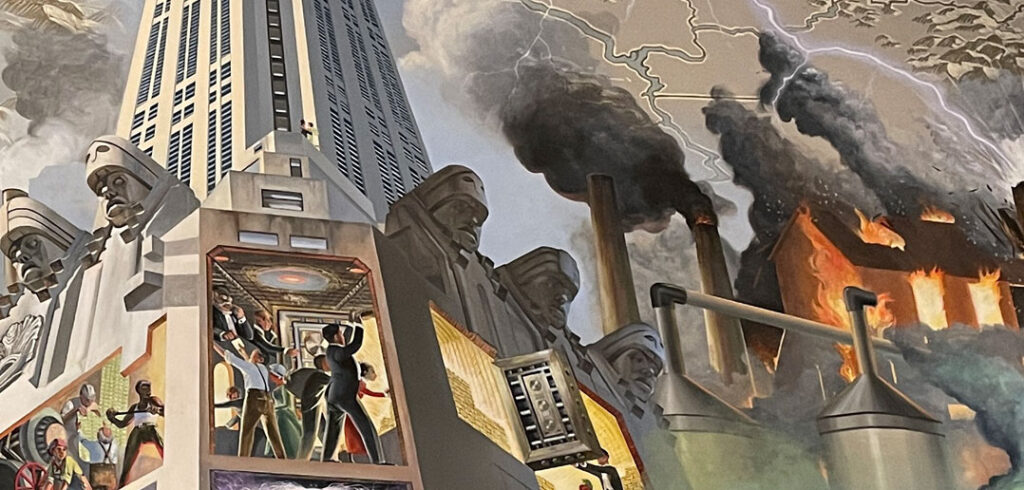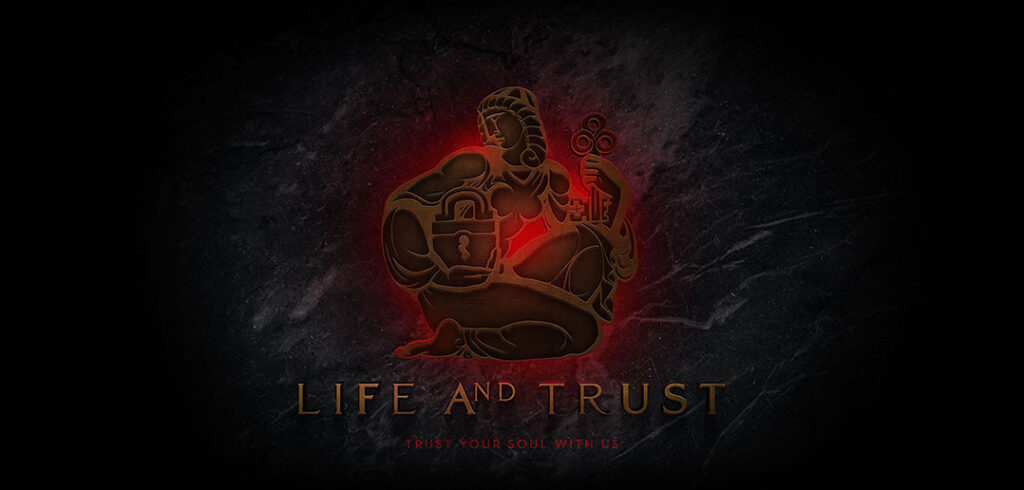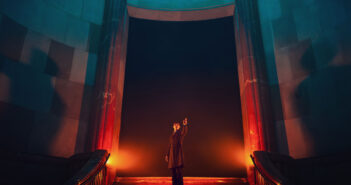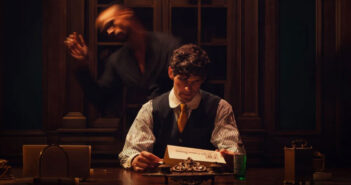The “Our History” section of Conwell Coffee Hall’s website hints at an “endless loop” in mentioning the entrepreneurialism of J.G. Conwell.
Conwell is surely being set up as the lead character of the new immersive theater show Life And Trust NYC from Emursive, the production company operating Sleep No More at the McKittrick Hotel in New York City.
But it’s also my ongoing speculation that this titan of industry didn’t make his fortune solely through bootstraps and grit.
Nay—there’s surely occult and supernatural powers at play in Life And Trust, and they’ll be at the heart of the show’s “endless loop.”
(Note: I will use Life And Trust, Life And Trust NYC, Sleep No More, and Sleep No More NYC interchangeably for SEO purposes.)
What’s In A Number?
A recent commenter on my previous Life And Trust post (he’s calling himself “Joe M”) pointed out that all of the clocks in Conwell Coffee Hall are stopped on 10:29.
The numbers “10” and “29” appear elsewhere, such as on the complimentary keychain given to early ticket purchasers for the debut of Life And Trust NYC.
And as Joe M said, this number almost definitely references the Stock Market Crash of 1929, which started in October (the tenth month) of that year.
So, we have our “10” and “29.”
Perhaps J.G. Conwell will do whatever it takes to not suffer the loss of his own fortune to the crash. Conwell is probably so in love with his wealth and status that he’s willing to keep his assets by any means necessary, even if it means sealing it away within the “endless loop” mentioned in the Conwell Coffee Hall passage.
Stories of Faustian pacts almost always revolve around the lust for earthly attainment now at the expense of something greater and far more important down the road—the elevation of the human soul.
These loops are fascinating to me because of the structural purpose they serve to an immersive show’s storytelling along with their narrative implications.
For example, at the end of every loop in a given Sleep No More NYC performance, we see Hecate strutting down the streets of Gallow Green on the fourth floor of the McKittrick. She is orchestrating her greatest and most terrible magic—the loop that damns the hotel and all of its residents to never-ending torment.
Tears And Laughter
It wasn’t until this year that I finally saw Hecate’s performance of the “Is That All There is?” rendition by Sinatra.
It’s spectral, distorted, and haunting.
It’s not a lip-sync, but a channeling of some otherworldly presence to convey the truth of what the McKittrick Hotel’s curse is all about. It’s the attempt of one woman to cheat death and avoid her fate, even if she is creating the very hell she’s running from. It happens over and over again, night after night.
I’ve read a lot about the occult and esoteric figures over the years, and the message is always clear. Those that use occult practices to gain material wealth and power for the short (and mortal) term are practicing black magic.
But those who are using their esoteric knowledge to achieve some kind of greater understanding and are not seeking to control or harm others, well, they’re working toward some kind of higher ascension. Along the way, these individuals should be striving to better the world around them, too.
It’s very much a breakdown between Yoda versus the Emperor, and how they use the Force to influence the world around them.
Hecate in Sleep No More NYC is using her sorcery to control the individuals and environment around her. But it’s ultimately not what she wanted or intended; as she finishes her possessed performance, she cracks. Tears are shed; those cries are then quickly masked by laughter.
Hecate is stuck.
But she doesn’t know how to end it and finally let go, so she persists in the curse.
Her motivations—who knows?
But the loop is her creation to avoid fate and control the world around her. The ultimate dark irony is she, too, is trapped and enslaved right along with her victims.
Constants And Variables In The Loops
In The Drowned Man, the occult obsession the show’s antagonist, Mr. Stanford, has with creating a new and perfect work of cinema has led him to turning all those under his sway into supernatural servants.
They, too, are all locked in an “endless loop.”
I’ve read the entirety of the “Dust Witch” WordPress, and there the nameless blog writer speculates that the unfinished script of screenwriter George Buchanan (who wrote the script for Stanford’s new and perfect film, The Drowned Man) is a contributing factor to the curse of the loop damning Temple Studios.
But these Punchdrunk shows are narratively loose while simultaneously loaded with narrative and symbolic deliciousness, so who is to say what is truly creating the time loop in The Drowned Man. It’s surely a combination of madness, murder, and magic—three beloved plot devices in any given masked show by Punchdrunk.
Still, the loop exists, and it’s eerie seeing everyone robotically rearrange themselves back to their starting positions at the top of every hour during a given show.
I’ve always had an uneasy feeling about the concept of eternal recurrence, and in these immersive theater shows from Punchdrunk and Emursive, we see the supernatural elements of eternal recurrence playing out all around us—and we are powerless to do anything about it save observance.
Is history doomed to repeat itself?
Or are there always slight variations that create not so much an endless loop, but rather a spiral slowly leading to a wholly new conclusion? (I credit Flora from Berserk with this idea.)
Depending on how much LARPing you want to do in your visits to the McKittrick Hotel and the soon-to-open Life and Trust Bank, you will always see little variations in these shows based upon the performers who inhabit the characters.
You can dive head-first into the immersion by viewing each performance in every loop of every show as a break-away timeline. Each performance is its own new reality with small variations splitting off from every night within the McKittrick Hotel these past 13 years.
We’re talking about Many Worlds Interpretation, Schrödinger’s Cat, and the constants and variables in BioShock Infinite.
Yes, I’m absolutely letting my imagination run wild.
But that’s the point of art.
True art is supposed to inspire awe and alter your consciousness.
The Phantom Of Gay Street
Now it is time for me to really go off the deep end.
Because what could possibly happen to the real world from these fictional loops running almost endlessly at 530 West 27 Street in New York City, nearly night after night, for 13 years? What could very well happen at 20 Exchange Place?
First, a word from Alan Moore.
He’s a favorite writer of mine, and I always admired his declaration of becoming a magician when he turned 40 (some years ago, now). He sees no difference between magic and art, and believes they are the same thing since art is birthed by the spontaneous creation of an intangible thought.
Here’s an incredible quote from the end of his occult primer, Promethea:
Consciousness, unprovable by scientific standards, is forever, then, the impossible phantom in the predictable biologic machine, and your every thought a genuine supernatural event. Every thought is a ghost, dancing.
Another important one is this:
Opera, as developed by practicing alchemists, such as Monteverdi, attempted to magically alter consciousness by incorporating music, words, costume, and dance to similarly overwhelm the senses.
I’m going to take that and expand on it.
Now, in the bizarrely fascinating book, Multiple Man: Explorations In Possession and Multiple Personality, psychologist and author Dr. Adam Crabtree explores the possibility of many selves in the human consciousness, and he looks into the occult and esotericism as one source for understanding this.
In his own words, Crabtree says Multiple Man:
Western occult tradition holds that all thought has effects which go beyond the mind of the thinker.
Thus, if thoughts are things and if an individual or group focuses with force upon some thoughts, an objective psychic will is produced. If the energy applied to the thought is powerful but confused, a thought atmosphere with a particular emotional tone will result.
If the energized thought is well-defined, it will become a thought-form, which will both exist as an entity and have a power and endurance proportionate to the energy put into it.
A good example of a reported thought-form is introduced at the beginning of The Mothman Prophecies by John Keel (an incredibly wild book I highly recommend), where he discussed the caped and top hat-wearing “Phantom of Gay Street” in Greenwich Village.
But Keel suspected the Phantom was not a ghost at all.
Rather, he believed it to be a thought-form—a tulpa—since the entity specifically appeared at 12 Gay Street. This was the former address of author Walter Gibson, who created the famous Shadow character. Gibson wrote over 20 novels about this character. Many, if not all, were produced at 12 Gay Street.
Quoting John Keel from The Mothman Prophecies:
Why would a Shadow-like apparition suddenly appear in an old house? Could it be some kind of residue from Walter Gibson’s very powerful mind?
The Tibetans believe that advanced human minds can manipulate these invisible [psychic]energies into visible forms called tulpas, or thought projections.
Did Walter Gibson’s intense concentration on his Shadow novels inadvertently bring a tulpa into existence?
With all of this woo-woo stuff in mind, what kind of thought-forms or thought atmospheres come into existence from the intense sensory experiences we all collectively have when visiting the McKittrick Hotel or the soon-to-open Life and Trust Bank?
What will those “endless loops” bring into reality outside of an immersive theater show?
Maybe once the leasing drama between Emursive and its landlord is over, and the McKittrick Hotel shutters permanently, some supernatural residue will still linger.
The building will surely turn into overpriced condos for Manhattan’s elite. Perhaps on some late nights, the screams of a maddened Macbeth will be heard echoing down the hall toward some yuppie’s stainless steel kitchen.
And we’ll be the inadvertent architects of that loop.
End rant.

